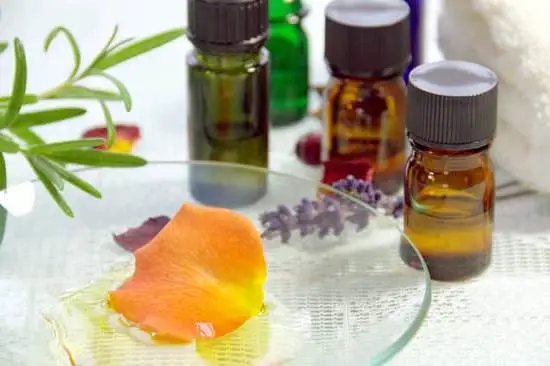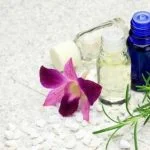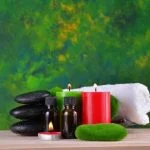Aromatherapy has been practiced for centuries as a natural way to enhance physical and emotional well-being. In recent years, the use of aromatherapy samples has gained popularity as people seek to incorporate the benefits of essential oils into their daily routines. This article will explore the many advantages and uses of aromatherapy in daily life, as well as provide step-by-step instructions on how to create your own aromatherapy sample.
Understanding what aromatherapy is and how it works is essential before diving into creating your sample. We will discuss the basic principles of aromatherapy and its effects on the mind and body, providing a foundation for making informed decisions about which essential oils to choose for your personalized blend.
Once you have a grasp of the fundamentals, we will guide you through the process of choosing essential oils that cater to your specific needs and preferences. From there, we will cover the creation of a base by mixing carrier oils and other ingredients, blending essential oils, packaging and presentation ideas, as well as instructions for use and application methods.
Whether you are new to aromatherapy or looking to expand your knowledge, this comprehensive guide will equip you with everything you need to create an effective and personalized aromatherapy sample.
Understanding Aromatherapy
Aromatherapy is a holistic healing treatment that uses natural plant extracts to promote health and well-being. It aims to improve physical, mental, and emotional health through the inhalation or topical application of essential oils. These oils are believed to have powerful therapeutic properties that can positively affect a person’s mood or health.
What Is Aromatherapy?
Aromatherapy involves the use of essential oils, which are highly concentrated plant extracts, to control and improve a person’s physical, emotional, and spiritual well-being. The practice dates back thousands of years, with its roots in ancient civilizations such as Egypt, China, and India. In recent years, aromatherapy has gained popularity as an alternative medicine for relieving stress, anxiety, pain management, and enhancing relaxation.
How Does Aromatherapy Work?
When essential oils are inhaled or absorbed through the skin during massage or bathing, they can interact with the body’s chemistry in a number of ways. The aroma stimulates the olfactory system (the part of the brain connected to smell), triggering a reaction that sends messages to the limbic system – the part of the brain that controls emotions and memories. Certain scents can evoke feelings of calmness and relaxation while others may have invigorating effects.
Benefits of Understanding Aromatherapy
- Improved mental clarity
- Enhanced mood
- Reduced stress and anxiety
Learning about aromatherapy helps individuals understand how specific essential oils can support their overall health & wellness goals by incorporating them into their self-care routine.
Choosing Essential Oils
Aromatherapy samples are a great way to explore the benefits and uses of essential oils in your daily life. When it comes to creating your own aromatherapy sample, one of the most important steps is choosing the right essential oils. With so many options available, it can be overwhelming to decide which oils to use. However, by understanding the properties and benefits of different essential oils, you can select the perfect combination for your aromatherapy sample.
When choosing essential oils for your aromatherapy sample, it’s essential to consider their therapeutic properties. For example, lavender oil is known for its calming and relaxing effects, making it a great choice for promoting sleep and reducing anxiety.
On the other hand, peppermint oil is invigorating and can help with headaches and mental clarity. By identifying the specific benefits you want to achieve with your aromatherapy sample, you can narrow down the selection of essential oils that will best suit your needs.
In addition to therapeutic properties, it’s also important to consider the scent profile of each essential oil. Some scents may be more appealing to you than others, so it’s important to take personal preference into account when choosing essential oils for your aromatherapy sample. You can also experiment with blending different scents together to create a unique and customized aroma that resonates with you.
Ultimately, selecting the right essential oils for your aromatherapy sample involves a balance of therapeutic benefits and personal preference. By carefully considering these factors, you can create a truly tailored and effective aromatherapy experience.
Creating the Base
After choosing the essential oils for your aromatherapy sample, the next step is to create the base by mixing carrier oils and other ingredients. Carrier oils are important because they help dilute the essential oils, making them safe to use on the skin.
Some popular carrier oils include jojoba oil, sweet almond oil, and coconut oil. When mixing your carrier oils, it’s important to consider the therapeutic properties of each oil and how they will complement the essential oils you’ve chosen.
To create your base, start by selecting a carrier oil or a combination of carrier oils that best suit your needs. For example, if you’re making an aromatherapy sample for relaxation, you might choose a combination of lavender and chamomile essential oils with a carrier oil like sweet almond oil.
Once you’ve chosen your carrier oil(s), mix them together in a clean glass bottle or container. You can also add other ingredients such as vitamin E oil or aloe vera gel to enhance the overall benefits of your aromatherapy sample.
It’s important to remember that creating the base for your aromatherapy sample is a crucial step in ensuring the effectiveness and safety of the final product. Take your time to research different carrier oils and their properties, and experiment with different combinations until you find one that works best for you.
With some creativity and knowledge about essential oils, you can create a base that not only complements the scents but also enhances the therapeutic benefits of your aromatherapy sample.
| Carrier Oils | Therapeutic Properties |
|---|---|
| Jojoba Oil | Antibacterial, anti-inflammatory |
| Sweet Almond Oil | Moisturizing, rich in vitamins A and E |
| Coconut Oil | Antifungal, great for skin hydration |
Blending Essential Oils
When creating aromatherapy samples, one of the most important steps is to blend essential oils effectively. The right combination of scents can enhance the therapeutic benefits and create a pleasing aroma for the user. Here are some tips and techniques for blending different essential oils to create personalized aromatherapy samples.
First, it’s essential to understand the different categories of essential oils: top notes, middle notes, and base notes. Top notes are light, fresh, and uplifting scents such as citrus oils. Middle notes are floral or herbal scents that add balance to the blend. Base notes are deep, grounding aromas like cedarwood or patchouli. When blending essential oils, it’s important to include a balance of all three categories to create a well-rounded fragrance.
Another important aspect of blending essential oils is to consider their therapeutic properties. For example, lavender oil is known for its calming effects, while peppermint oil is invigorating and refreshing. By combining oils with complementary therapeutic properties, you can create a blend that serves multiple purposes, such as promoting relaxation while also increasing mental clarity.
When blending essential oils for aromatherapy samples, start with small quantities to experiment with different combinations. Keep track of each blend you create so that you can replicate or adjust them based on your preferences and feedback from others who try your samples.
| Tips for Blending Essential Oils | Techniques for Combining Scents |
|---|---|
| Understand top notes, middle notes, and base notes | Consider the therapeutic properties of each oil |
| Start with small quantities when experimenting | Create blends that serve multiple purposes |
Packaging and Presentation
When creating aromatherapy samples, the packaging and presentation play a crucial role in enhancing the overall experience for the user. Here are some creative ideas for packaging and labeling your aromatherapy sample:
1. Unique Containers: Consider using small glass vials, rollerball bottles, or even vintage perfume bottles to add a special touch to your aromatherapy samples. These containers not only look attractive but also help preserve the quality of the essential oils.
2. Personalized Labels: Create custom labels for your aromatherapy samples by incorporating beautiful designs, vibrant colors, and informative details about the scent and its benefits. You can use online design tools or seek professional printing services to achieve a polished look.
3. Eco-Friendly Options: Embrace sustainability by opting for eco-friendly packaging materials such as recycled paper, biodegradable labels, or reusable containers that can be repurposed by the recipient. This not only adds value to your products but also aligns with the growing demand for environmentally conscious choices.
4. Gift Presentation: If you intend to distribute your aromatherapy samples as gifts, consider adding an extra touch of elegance by including decorative elements such as ribbons, dried flowers, or personalized note cards. This will make the recipients feel special and appreciated.
With these creative ideas and attention to detail, you can elevate the appeal of your aromatherapy samples while ensuring a delightful experience for those who use them. Remember that thoughtful packaging and presentation not only enhance the visual appeal but also communicate the care and effort put into creating each sample.
Using Aromatherapy Samples
Direct Application
One of the simplest ways to use your aromatherapy sample is through direct application. This method involves applying a small amount of the aroma blend directly onto the skin, typically on pulse points such as the wrists, temples, or behind the ears.
Before using the sample, it’s important to perform a patch test to ensure there are no adverse reactions. If all is well, you can then proceed to gently rub the oil into your skin and enjoy the benefits of the scent throughout the day.
Diffusion
Another popular way to enjoy aromatherapy samples is through diffusion. Diffusers come in various forms such as electronic diffusers, reed diffusers, and candle diffusers. They work by dispersing essential oils into the air, allowing you to breathe in their therapeutic properties. To use your aromatherapy sample with a diffuser, simply add a few drops of the blend into the designated compartment of your chosen diffuser and follow the device’s instructions for use.
Inhalation
Inhalation is a powerful method for experiencing aromatherapy benefits and can be done in different ways. One common inhalation method involves adding a few drops of your aromatherapy sample to a bowl of hot water and inhaling the steam with a towel over your head to trap in the aroma.
Another method is using personal inhalers or taking deep breaths directly from an open bottle of essential oil. Inhalation allows for quick absorption of essential oils into the body and can be especially effective for respiratory issues or emotional support.
By following these instructions for use and application methods, you can make the most out of your aromatherapy sample and incorporate it into your self-care routine to promote overall well-being.
Benefits of Aromatherapy Samples
Aromatherapy samples offer a convenient and accessible way to experience the benefits of essential oils in your daily life. Whether you are looking to reduce stress, improve sleep, or enhance your mood, incorporating aromatherapy into your self-care routine can have numerous advantages. By creating and using your own aromatherapy samples, you can personalize the scents and blends to suit your specific needs and preferences.
One of the key benefits of aromatherapy samples is their versatility. With a collection of different essential oils, you can create custom blends for various purposes, such as relaxation, focus, or energy.
These samples can be easily carried in a purse or pocket, allowing you to enjoy the therapeutic benefits of aromatherapy wherever you go. Whether you are at work, traveling, or simply at home, having your own aromatherapy sample on hand can provide quick and easy access to the calming effects of essential oils.
Another advantage of incorporating aromatherapy samples into your self-care routine is the ability to experiment with different scents and combinations. By creating your own samples, you have the freedom to explore various essential oils and discover which ones resonate with you the most. This process of experimentation can be both enjoyable and enlightening, as it allows you to develop a deeper understanding of how different scents affect your mood and well-being.
In addition to serving as personal wellness tools, aromatherapy samples can also be shared with friends and loved ones. These small vials of aromatic blends make thoughtful gifts that can introduce others to the benefits of essential oils. By encouraging others to explore aromatherapy through samples that they can easily incorporate into their own self-care rituals, you are not only sharing the power of scent but also promoting overall well-being within your community.
Conclusion
In conclusion, aromatherapy offers a wide range of benefits and uses that can enhance our daily lives. From relaxation and stress relief to promoting better sleep and boosting mood, the power of essential oils in aromatherapy should not be underestimated. By creating your own aromatherapy samples, you have the opportunity to customize blends that cater to your specific needs and preferences.
Understanding the basics of aromatherapy, from choosing essential oils to blending them with carrier oils and other ingredients, is key to creating effective and fragrant samples. With the right techniques and tips for blending different scents, you can experiment with various combinations to find what works best for you. Packaging and presenting your samples in a creative way adds a personal touch to your aromatherapy experience, making it even more special.
As you delve into the world of aromatherapy samples, don’t forget to explore different application methods and instructions for use. Whether it’s through inhalation or topical application, understanding how to use your samples properly will ensure that you reap the full benefits of aromatherapy. In incorporating aromatherapy into your self-care routine, you may discover a host of advantages that contribute to your overall well-being.
So why not give it a try? Get started on creating your own aromatherapy samples today, and embark on a journey towards greater relaxation and self-care.
Frequently Asked Questions
How Do You Make Your Own Aromatherapy?
Making your own aromatherapy blends can be a fun and fulfilling process. Start by choosing a carrier oil, such as sweet almond or jojoba oil, and then add a few drops of your favorite essential oils. Be sure to research the properties of each oil and their potential effects before creating your blend.
How Do You Make Essential Oil Sample Packets?
Creating essential oil sample packets is a great way to share different scents with others. Start by selecting small glass vials or sample bottles, then carefully drop 5-10 drops of essential oil into each one. Label the samples clearly and consider including information about each oil’s benefits.
How Do You Make an Aromatherapy Compress?
Aromatherapy compresses can offer relief for muscle pain or tension. To make one, add 4-6 drops of an essential oil like lavender or eucalyptus to a bowl of warm or cold water, depending on the desired effect. Soak a clean cloth in the water, wring it out, and apply it to the affected area for soothing relief.

Are you looking for a natural way to improve your health and wellbeing?
If so, aromatherapy may be the answer for you.




